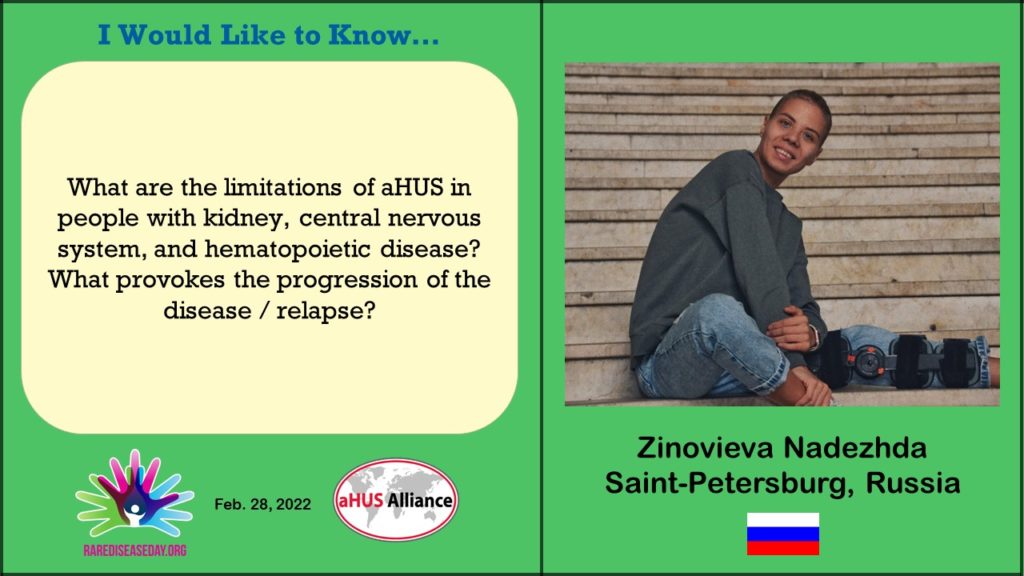Zinovieva asked two related questions in the RDD 2020 video The issues of what provokes ( or triggers) the development of aHUS or starts it again, relapse , after being in remission have been addressed in other blogs.
The limitations of aHUS in people with kidney , central nervous or haematopietic disease is much harder to respond to.

The diseases mentioned are related to three organs of the body, the kidney , the brain and blood.
aHUS is a TMA.
TMA can range from a mild, self-limited form to uncontrolled fulminant disease leading to death. Limiting TMA leads to aHUS limitation.
There is excessive thrombotic activity, depleting platelets levels and damage to organs.
When there are no more platelets , or there is a state of thrombocytopenia in doctor’s speak, there can be no more clotting. TMA will have reached a limit, until more platelets can be produced.
However the inflammation and damage cause by the uncontrolled Complement in an aHUS episode will continue as long as there are more Complement components numbers C3, CFB, and C5 to C9 , available to set off and form the membrane attack complex to continue the attack . Once that supply is exhausted aHUS will have reached a limit, until more Complement components more are produced. In time it could be self limiting as a result , but not very likely.
Anemia is caused by a reduction red blood cells. While the conditions causing the destruction of red blood cells still exist more red bloods cells will be destroyed. But red blood cells carry oxygen around the body and if there are not enough red blood cells to carry that oxygen eventually death will result. The ultimate limitation and the presence of aHUS and TMA activity factors will no longer matter.
Before that happens, without treatment organs would be closing down anyway. The hallmark of aHUS is renal organ impairment If there is unrecoverable damage to the kidneys they will no longer function and toxins and fluids will build up until the heart function is directly affected and stops and/or lung function fails. Speeding up oxygen supply reduction and hastens heart failure and also brain damage.
Clinical interventions are needed to replace some kidney function to reduce fluids and toxins and empty the lungs and brain of fluid building up . The stress on the heart is lessened although blood presure may still be excessive when red bloods, although depleted, at least may carry enough oxygen. Other medical interventions may be need to stimulate more red blood cells in the bone marrow.
But what ultimately must be limited is the damage to the blood vessels.
That limitation comes from a block of a key part of the destruction process within Complement system using a complement inhibitor.
The key part will eventually be made unable to function, even newly produced ones will be found by the complement inhibitor and blocked too. Once Complement activity is limited then hopes for a recovery can begin, Zinovieva .
Article No. 512

